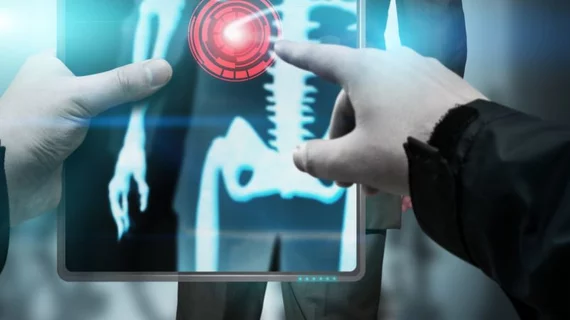Healthcare groups launch first-of-its-kind initiative to meet growing demand for X-ray technologists
One of the nation’s oldest public medical schools has launched a first-of-its-kind program to help medical assistants advance their radiology careers and address the growing need for imaging technologists.
The University of Texas Medical Branch—part of the University of Texas System—partnered with the Houston-based College of Health Care Professions on the new initiative, allowing certified medical assistants to more quickly attain a Limited Medical X-ray Technologist Certificate, the pair announced Monday.
Under the 26-week program, which started in January with five UTMB students and more from other health organizations, students take virtual classes and complete hands-on work at their place of employment, all while using technology they’re accustomed to and will use after certification.
Employers cover all costs, and graduates earn credentials to take a limited role in imaging care—primarily orthopedic exams and chest x-rays—in nearly half the time typically required for training.
"Working learners with complicated lives require solutions that can accommodate their need for flexibility," Tonya Brightmon, vice president of program and partnership development at CHCP, said in a statement. "This partnership is a game-changer for medical assistants looking to move up the career ladder while continuing to serve on the front-lines of the healthcare workforce."
Angie Bush, administrative director of radiology at UTMB, said when she joined the organization three years ago many of her clinics weren’t doing enough volume to keep experienced radiologic technologists productive. And those few on-call professionals were tasked with driving to multiple care sites during the week, sometimes only completing one X-ray per location.
Employee engagement scores were down, turnover and burnout were up, and costs were running “well over” $1 million more than necessary, Bush said in an interview Wednesday with Health Imaging.
“Needless to say BRG [a hospital consulting group working with Bush] and I were in alignment. This was consuming our resources. It was a financial drain and patients were dissatisfied because they [clinics] never had the staff they needed,” she added Wednesday.
After trying to recruit, train and hire limited medical X-ray technologists, it took more than a year and a half to hire two. So she partnered with Brightmon and CHCP. And the program has been on the right track ever since.
As the initial pilot progresses, Bush says she plans to continue UTMB’s involvement. Brighton, meanwhile, expects the initiative to continue growing as demand for diagnostic radiology in urgent care centers expands.

